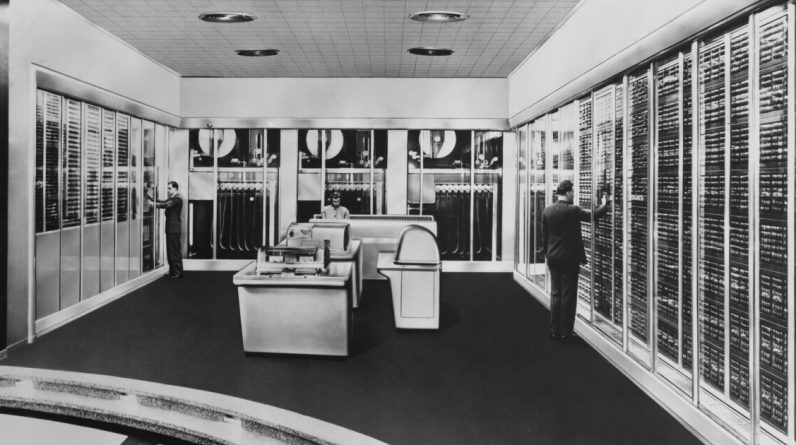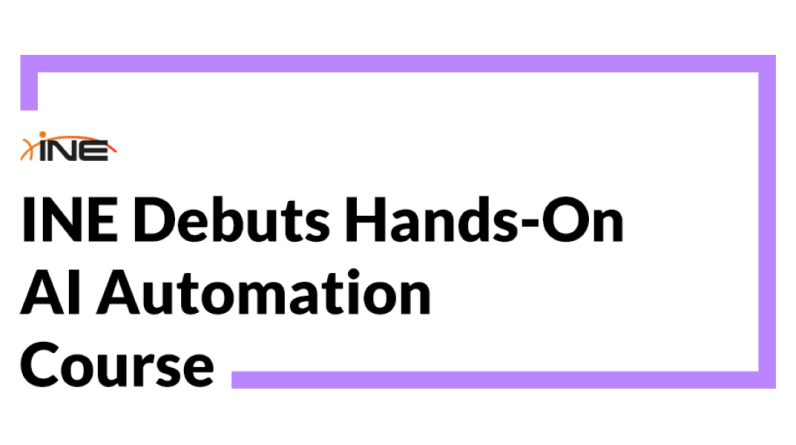
Generative AI can be used to reduce the time and cost of modernizing legacy core systems, according to consultants at large firms like Accenture and McKinsey.
Applying generative AI to core upgrades “is one of the most transformative ideas that I’ve seen early in the generative AI lifecycle,” said Michael Abbott, global banking lead at Accenture, in an American Banker podcast earlier this year. “It’s the ability to reverse engineer 30, 40 years of legacy Cobol code into close to its original requirements.”
The technology is still in early days and it’s not perfect, he acknowledged. “But we’re seeing 80% to 85% accuracy in reverse engineering legacy code into requirements, and then using engineers to modify that and structure it a little bit better, and then you can forward engineer it back into a modern architecture,” Abbott said.
Where a company has a legacy system and wants to modernize it to new technology, “that’s where we’re seeing generative AI to be a huge enabler for lowering the cost and reducing time,” said Aston Hamilton, engagement manager at McKinsey & Company, in an interview.
Some experts assert that the use of generative AI in core modernization projects would call for a great deal of human supervision.
“It reminds me of last century, when people were saying you want to migrate your applications that are written in archaic languages like Cobol, and you don’t want to rewrite them because it’s a big undertaking and the systems run all right, you just want to modernize them so they’re easier to support and they can have future capabilities,” said Steve Rubinow, professor at the Illinois Institute of Technology and former chief information officer at NYSE Euronext. Language translators promised to translate code from Cobol to another language like Java.
“People thought: ‘All we have to do is take current code and feed it into the translator, and then the translator will spit out the equivalent in Java, and then it’ll be easy to support,'” Rubinow said. “And then you ask the money question: How accurate is the translation? And the answer was, somewhere around 90%.”
But the work required to figure out which 10% was not accurate “was almost as much work as writing it from scratch,” Rubinow said.
The trouble with old core systems
The vast majority of U.S. banks still run older core systems, and about three-quarters of banks use one of the three top core vendors: FIS, Fiserv and Jack Henry.
“If your core goes down, it’s very difficult to continue to operate,” said Kristiane Koontz, executive vice president and director of banking transformation at Zions Bancorporation in Salt Lake City. “And many of these have real challenges with resilience. I think this is one of the biggest risks for the banking industry.”
Koontz is chair of the American Bankers Association’s core platforms committee, which meets with the top three core providers as well as some of the challenger core providers, to hear about their modernization road maps. FIS, Fiserv and Jack Henry all declined requests for interviews or comments.
Another problem with legacy core software in banking is that federal payment systems are tightly interwoven into the legacy systems, and controls have been built over the years to support that, said Kate Megraw, CIO of Webster Five Cents Savings Bank in Auburn, Massachusetts.
“As we’ve layered on Gramm Leach Bliley Act, Sarbanes Oxley Act and various compliance controls, those have also been baked into this legacy code,” Megraw said. “Although we’re seeing a lot of uptake to modern payments and same-day payments, we’re still living in a world where our payment systems are just as old. And they’re built on similar code and integrate so finely with these legacy cores.”
Aged core systems make it hard for banks to adopt new technology. Current software is typically written in newer programming languages like Java.
“I can go to a conference and see a technology that fits our strategic road map, I’d love to buy it,” Megraw said. “The road to getting that tightly integrated, not just screen-scrape integrated — using APIs to move data through secure API calls — is a lot easier said than done.”
And most community banks don’t have teams of engineers who can write code or develop APIs. Therefore they rely on their core vendors for any software upgrades.
In some cases, the people who developed the core system are no longer alive, and even finding developers fluent in Cobol can be a challenge.
“You normally have a bunch of pain points from not having the people who built it originally still available to help you to understand the system,” Hamilton said.
Where generative AI can come in
Generative AI can help companies cope with older software by making it understandable, according to Hamilton.
“Typically when you have some sort of legacy estate, be it software, be it data models, be it anything else that you can think of, the first step is usually just understanding that legacy estate,” he said. “The complexity and the vastness of the system requires a significant amount of specialized expertise for people to manually read everything, understand what it’s doing, and document it.”
Generative AI can be used to reverse engineer legacy code to create what McKinsey calls a natural-language technical specification.
“This is human readable, human understandable, simplified, rationalized description of whatever the legacy technology is doing,” Hamilton said. “Then you can modify it or optimize it to achieve a particular goal.”
In Koontz’s view, generative AI could act as an accelerator in this kind of work, and it could help a bank’s IT staff understand legacy technology. “Most banks don’t have good documentation of that,” she said.
Megraw agrees that generative AI could help with the business analysis part of a core upgrade – documenting the current state, both from a technology and a business process perspective. She estimates that this is about 20% of the work of a core modernization project.
McKinsey has a process for turning its natural language technical specification into a modernized platform, Hamilton said.
“Throughout this process, we leverage this democratized intelligence to help us accelerate converting the natural language specification that has been refined, optimized, etc., to a target technology style,” he said.
Generative AI can be useful for code refactoring, Koontz said. But “for a bank, that’s not where the work is,” she said, because most banks buy their core software from a vendor such as FIS, Fiserv or Jack Henry.
About 40% of a core transformation is cleaning up old data, making sure that it’s consistent and figuring out what data to take to the new core, she estimated.
“Sometimes you don’t need to take it all with you,” Koontz said. “So there’s a lot of housecleaning and then a lot of data compiling for data consistency and then migrating those accounts, customers, all that associated data from the old core to the new core.”
Generative AI might be able to help with some of that work, but not all of it, she said.
Most companies don’t have their data organized and formatted in a state that’s ready for generative AI, Rubinow pointed out.
“In any large organization, is all the data — text, numeric and systemic diagrams — everything that you need?” Rubinow said. “Is it all sitting there, gift wrapped, waiting to feed into a large language model so that it can get a grasp of everything that’s going on and with near perfect information?”
He agrees with the idea of feeding system documentation into a generative AI model and seeing what the system will make of it.
“It could give you a perspective,” Rubinow said. It also requires an expert who can guide the system — someone who understands all of the quirks, flaws and hiccups of existing systems.
Megraw added that without understanding the inner workings of a bank, it’s hard to understand its data. For instance, it’s hard to join data tables without knowing what data is in a teller transaction table versus an account opening table versus the general ledger structure, she said.
“There is some underlying understanding of the financial system and how those data points join to really understand the cleansing, making sure that things are labeled correctly, and then they’re able to be recalled in a way that is accurate and reportable,” Megraw said.
Hamilton asserts that generative AI can help clean up data, make sure it’s formatted correctly and move it from one system to another.
“We’ve been searching for a use case where generative AI could not accelerate and we still haven’t found one,” he said.
Generative AI might help the core software providers in modernization efforts in which they are trying to update the monolithic core systems they sell by re-architecting them into components they refer to as microservices architecture, Koontz said.
Megraw agreed that core system providers could rewrite microservices one at a time using generative AI.
“The use case for me would be, Jack Henry rewrites their entire account opening flow using generative AI and then finds a way to integrate that back to the old core,” Megraw said. “I think that’s a powerful use case.”
The rest of the work of a core modernization project is internal testing of the new system, for instance for regulatory compliance and integration with existing systems, Koontz said.
“As a bank, the regulators are very clear that you own your compliance,” she said. “So you’re going to have to test your data on a new core to ensure that it’s fully compliant.”
While generative AI could accelerate some of that integration work, humans will still have to spend a lot of time feeding the model and figuring out the necessary logic, she said.
The last part of a core modernization project — testing the new system — is already automated, Koontz said.
“We do some human tests on top of this just to double check the tech, but that’s a technology that’s already existed,” she said. This isn’t AI, it’s basic automation, she said.
If banks make the use of generative AI in core modernization an iterative process and don’t set expectations too high, they will get some value out of this, Rubinow said.
“The question is, will it be alchemy and turn lead to gold? I don’t think so,” he said. “At least not yet. But if your expectations are less than that, I think it can be very useful. You just have to decide how much you want to invest in it and where you think you’re getting payback and where you say it was interesting, but we’ve got to take a different approach because I don’t think we’re getting what we expected.”







